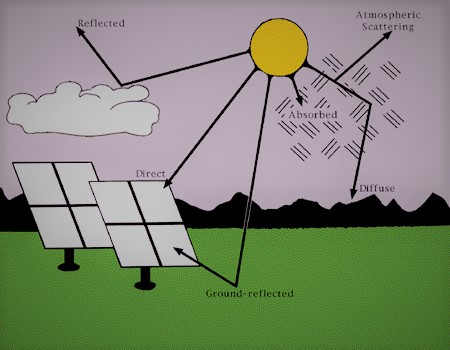Solar energy has gained widespread recognition as a clean and renewable energy source, offering a sustainable solution to the world’s increasing energy demands. As solar power becomes more integral to our energy landscape, accurately assessing the solar resource potential of different regions becomes crucial for efficient project planning and implementation. Global Horizontal Irradiance solar (GHI) emerges as a fundamental metric that plays a pivotal role in evaluating solar resource potential worldwide. In this article, we explore the significance of GHI in the context of solar energy assessment and its impact on the future of renewable energy.
Factors Affecting GHI:
Several factors influence the GHI values at a specific location:
a) Geographic Location: Regions near the equator receive higher GHI values due to the more direct angle of sunlight, while polar regions experience lower GHI levels.
b) Altitude: Higher latitudes receive more intense solar radiation since there is less atmosphere to attenuate the sunlight.
c) Climate and Weather Patterns: Cloud cover, atmospheric conditions, and local weather patterns impact the amount of solar radiation reaching the Earth’s surface, affecting GHI values.
d) Seasonal Variations: GHI values fluctuate throughout the year, with higher values during summer and lower values during winter.
Measuring GHI:
GHI is measure using specialised instruments called pyranometers, which accurately quantify solar radiation incident on a horizontal surface. These devices are calibrate to provide real-time data on solar energy levels.
Solar Resource Maps:
GHI data is utilised to create solar resource maps, which display the spatial distribution of solar energy potential across different regions. These maps offer valuable insights for solar energy planning, site selection, and project development.
Impact on Renewable Energy Planning:
GHI data plays a crucial role in renewable energy planning and policymaking. Governments and energy agencies use this information to identify regions with high solar potential and prioritise solar projects accordingly. It facilitates the integration of solar power into the existing energy mix and aids in achieving renewable energy targets.
Advancements in GHI Data Accessibility:
Technological advancements have led to increased accuracy and accessibility of GHI data. Online platforms and application programming interfaces (APIs) offer access to GHI information, empowering researchers, developers, and investors to make informed decisions about solar energy projects.
Conclusion:
Global Horizontal Irradiance (GHI) serves as a key metric for assessing the solar resource potential of different locations worldwide. By understanding GHI values and their variations, stakeholders in the renewable energy sector can plan and implement efficient solar energy projects.
As solar power continues to play an essential role in our transition to a sustainable energy future, GHI data will remain a fundamental tool in driving the global adoption of solar energy and contributing to a cleaner and greener world.



